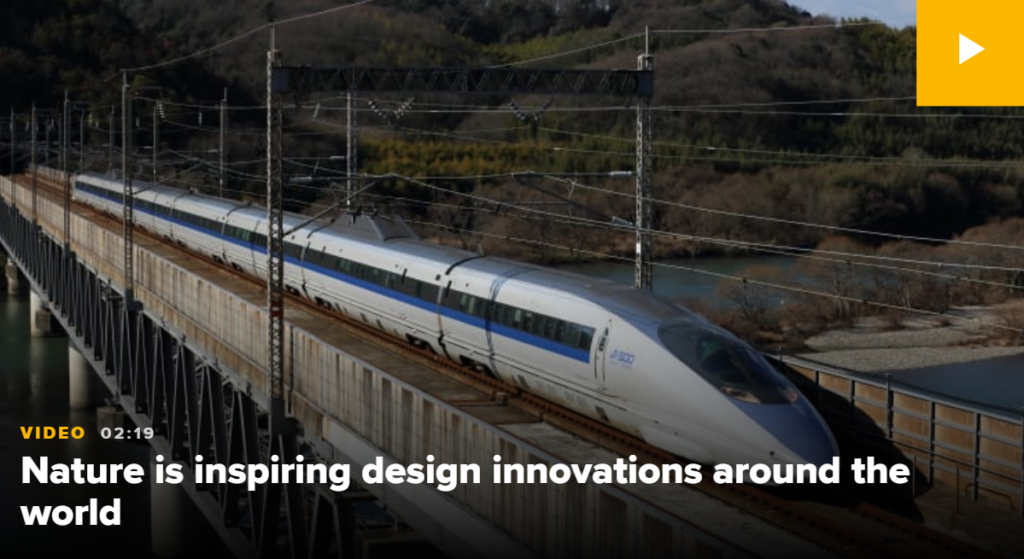- Our appreciation of nature has led to interesting innovations in design and engineering.
- The concept of “biomimicry” could have a big role when it comes to ideas about sustainable design.
From birds that can fly for months on end to giant redwoods stretching hundreds of feet into the air, the natural world inspires awe and wonder.
For thousands of years, humanity’s appreciation of nature has led to countless works of literature, art, and even innovations in design and engineering.
Examples of the latter include the long, pointy nose of the 500 Series Shinkansen trains used in Japan.
Inspired by the beak of the kingfisher, the high-speed train’s elongated tip was designed to, among other things, stop the loud noise — described by many as a “boom” — that would occur each time it passed through a tunnel at speed.
The above tweak can be described as a form of biomimicry. Defined as “a practice that learns from and mimics the strategies used by species alive today” by the Biomimicry Institute, some think the concept will have an important role to play when it comes to sustainability.
Janine Benyus is co-founder of the Biomimicry Institute. “I think people are going to biomimicry for the ‘sustainability win’ but they stay because of the novelty, because what they’ve found is category-disrupting platform technologies,” she told CNBC’s Sustainable Energy.
One example of bio-inspired design can be found at a desalination project on the Greek island of Tinos, in the Aegean Sea.
“We call it (the) Mangrove Technology Platform because we take … inspiration from the mangrove ecosystem,” Alessandro Bianciardi, an environmental engineer involved in the scheme, told CNBC.
Bianciardi is co-founder of a start-up called Planet which focuses on “biologically inspired design for sustainable innovation.” In reference to the Greek project, he explained that mangroves were able to colonize empty coastal areas because they had “the capacity to desalinate water.”
“As it grows, it creates conditions conducive for other species … slowly and together, they build up an entire ecosystem, where before there was nothing,” he added. “So the idea here, the analogy, is to reproduce this type of process but with technologies.”
The scheme in Tinos uses a collection of solar stills – kit that harnesses the heat of the sun alongside evaporation and condensation to purify saltwater and brine.
In addition to the purified water, which is used to grow tropical crops such as pineapple, another by-product of the process is salt.
“It’s very important because it allows (us) to utilize saline water to grow crops,” Bianciardi said. “And eventually, in other locations, it could be used to regenerate land where land … is not productive anymore.”
While systems such as the one in Greece are interesting and show potential, there are also challenges: such as getting “bio-inspired” projects beyond the prototype stage.
“First of all, when you try to emulate nature, you must be aware that sometimes natural processes are done at small-scale and in milder conditions than the ones that are needed for our society,” Bianciardi said.
“So what happens is that, sometimes, when you try to scale up (a) natural process, you are not able to reproduce that.”
He went on to emphasize the importance of harnessing a range of talents and ideas to take ideas about biomimicry to the next stage.
“Biomimicry, by definition … is a multi-disciplinary practice,” he said. “Definitely, it’s advisable to bring biologists to the process, because they … can indicate … which are the best natural models that you can emulate.”
He added that the next steps depend on the type of problem you have to solve.
“If it’s a technical problem, then you will need engineers, designers, architects,” Bianciardi said. “If it’s a social problem — because biomimicry can be applied also to solve the social problems — then maybe you need other expertise like planners, social scientists, economists.”
Article Credit: cnbc
